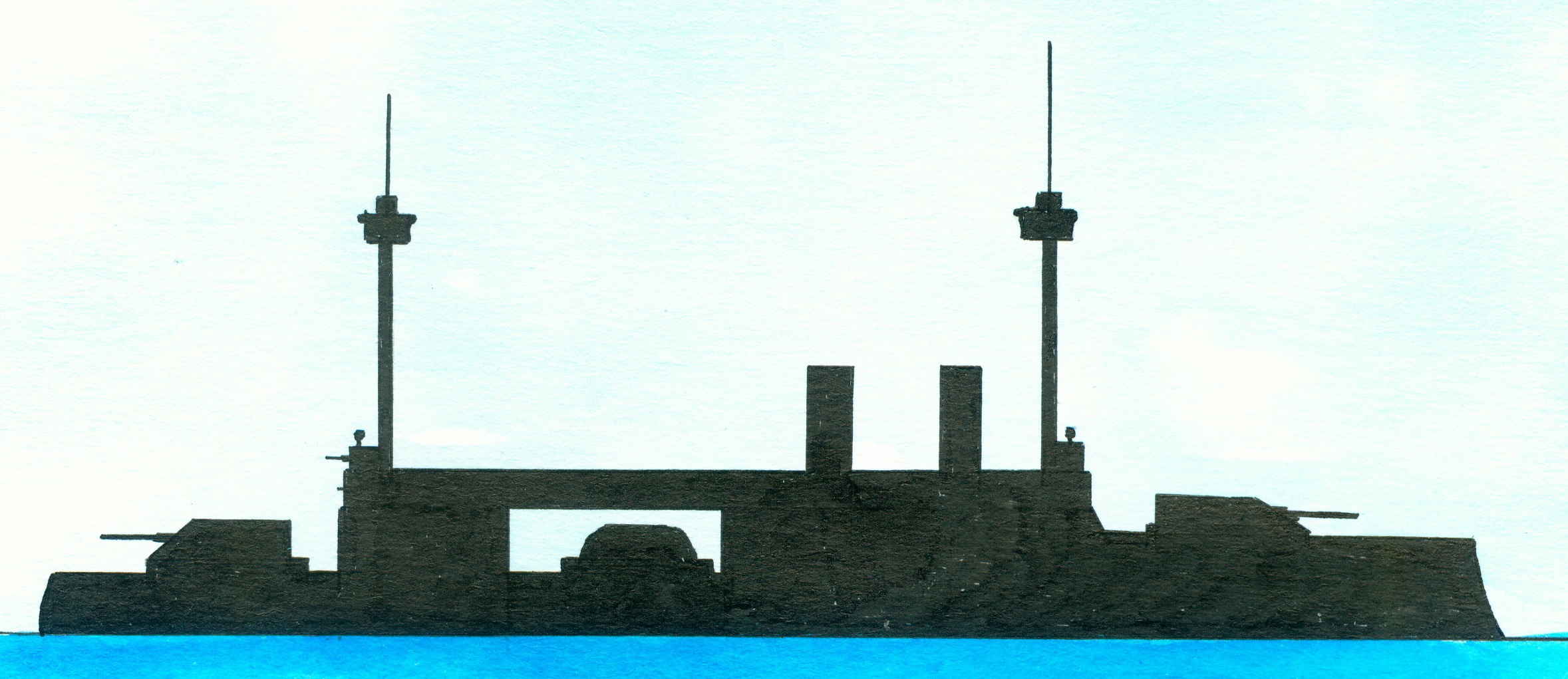Brandenburg-class
Her building as the third unit of the Brandenburg-class (end 1888 started the design work for this class, succeeded by the Kaiser Fridrich III-class) as the ‘C’ at the AG Vulcan shipyard, Stettin was ordered in 1890. She was the same year in May laid down with building no, 1992, launched on 14 December 1891, commissioned on 14 October three years later and on 12 September was she sold to Turkey just like her sister ship Kurfürst Friederich Wilhelm and both ships were renamed in Turgut Reis and Hayreddin Barbarossa. At the end of the First World War she salvaged the stranded Turkish battle cruiser Yavuz (the former German Goeben). Around 1924 used as a training ship, then converted into a hulk and serving in the Dardanelles until 1938 when she apparently was no longer used, although not earlier broken up as in 1955-1956. Her sister ships were the Kurfürst Friederich Wilhelm, Wörth and Brandenburg.
With a displacement of 10,013 tons/9,855 long tons/11,307 short tons (design)-10,670 tons/10,500 long tons/11.760 short tons (full combat load) were her dimensions 115,7 (over all) x 19,5-19,74 (including torpedo nets) x 7,6 (fore)-7,9 (aft)metres or 379’ x 64’ x 26’. The two sets 3-clynder triple expansion engines supplied 10,228 ihp allowing a speed of 16,9 knots and with a speed of 10 knots she had a range of 4,500 nautical miles. Her crew in German service numbered 568 men. She was armed with 3x2-28cm guns placed in forward, amidships and aft, 8-10,5cm quick firing guns and 8-8,8 cm guns in casemates and 6-45cm surfaced torpedo tubes. The armour consisted of a 12-16” thick belt, a 3” thick deck while the gun turrets were protected by 9” thick armour.(1)
Note
1. One of her gun turrets was preserved, see website guns


